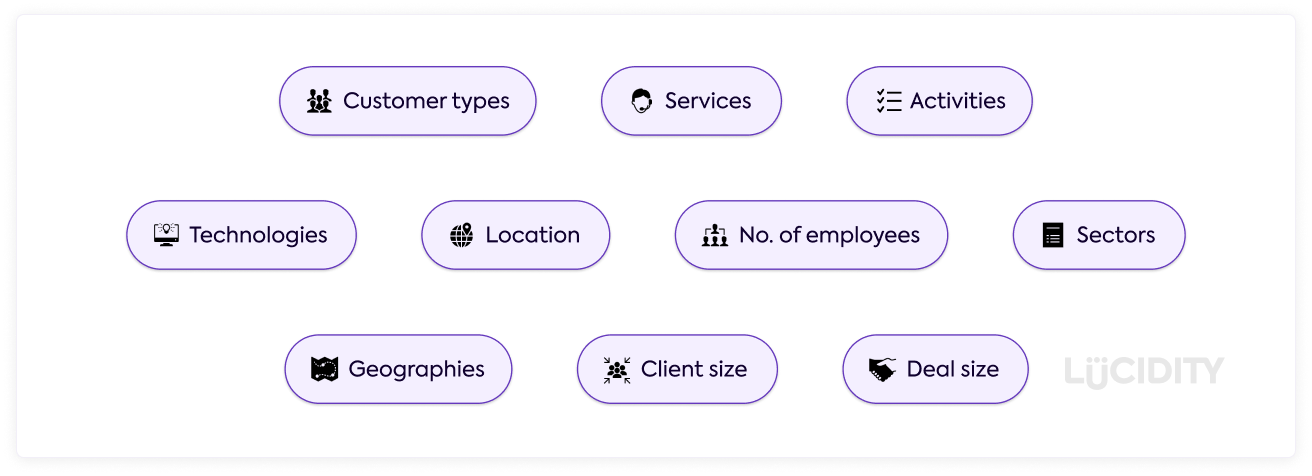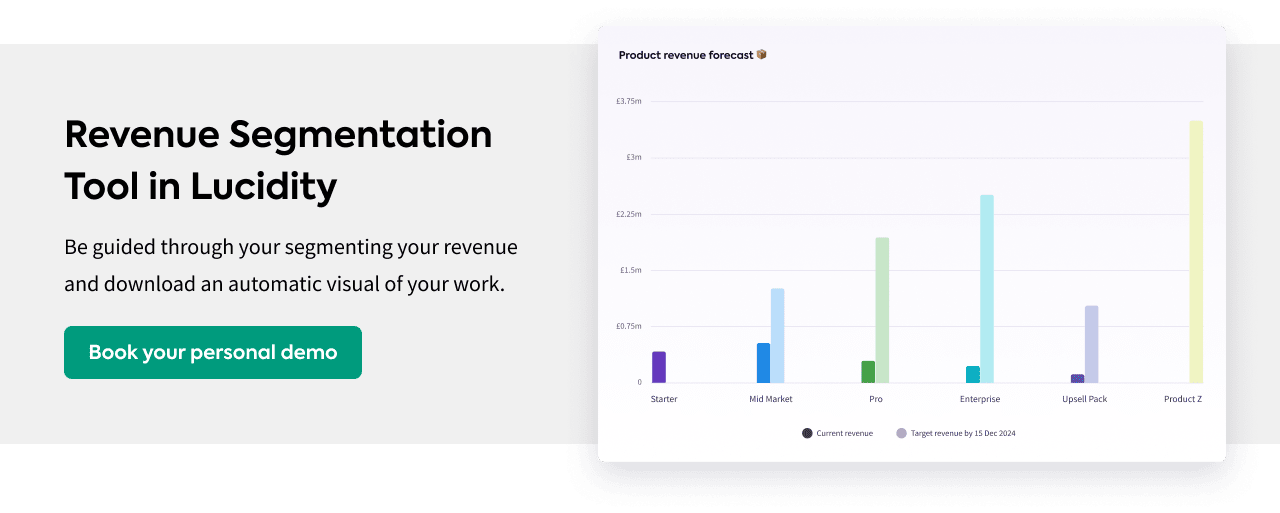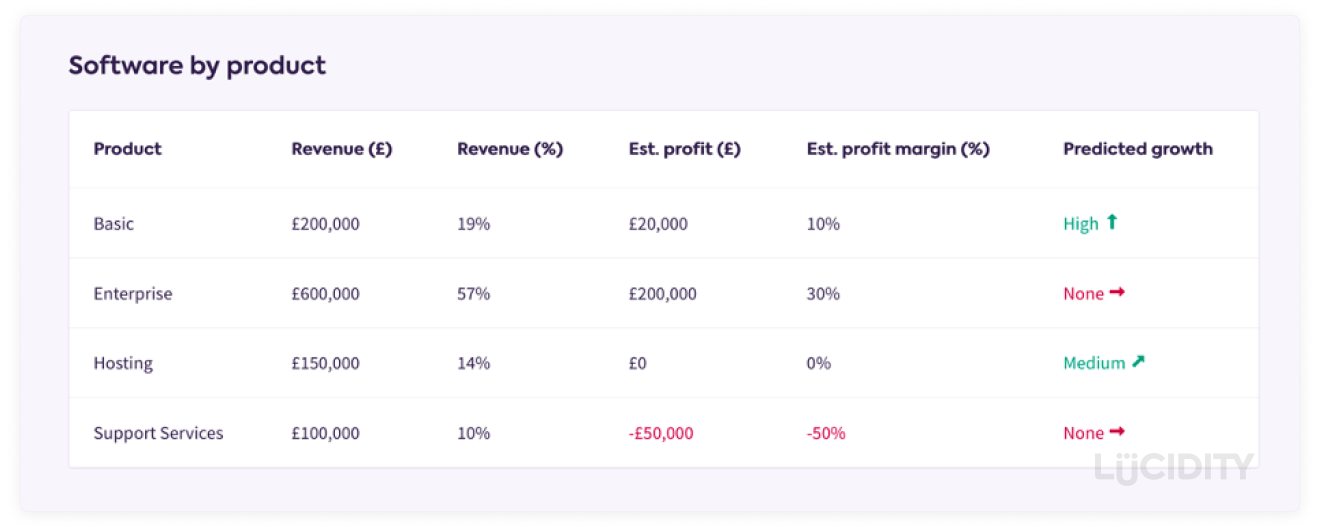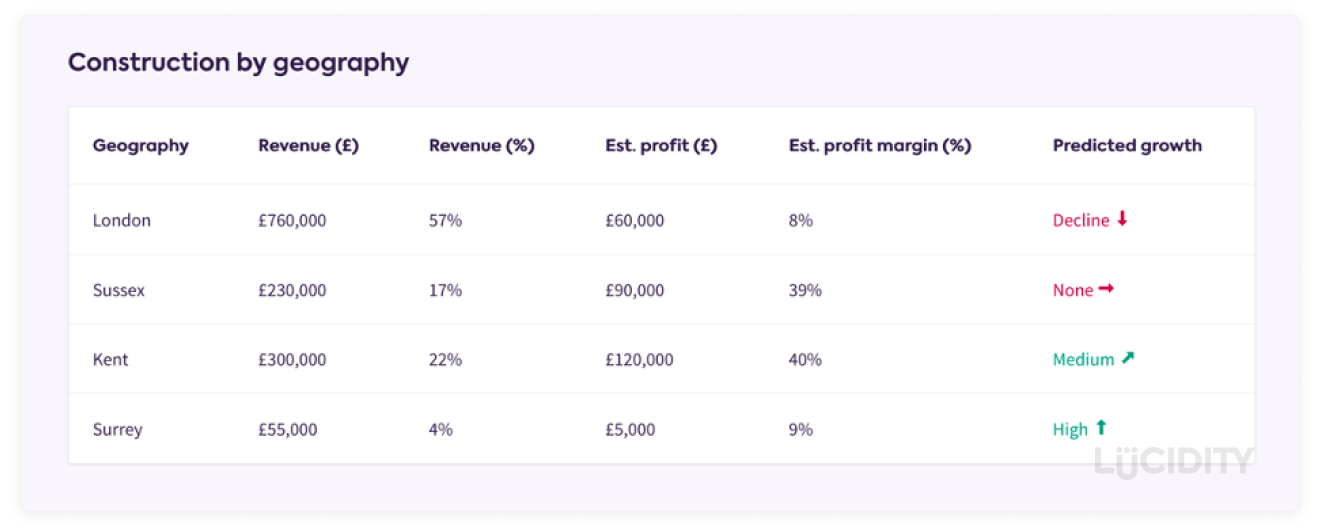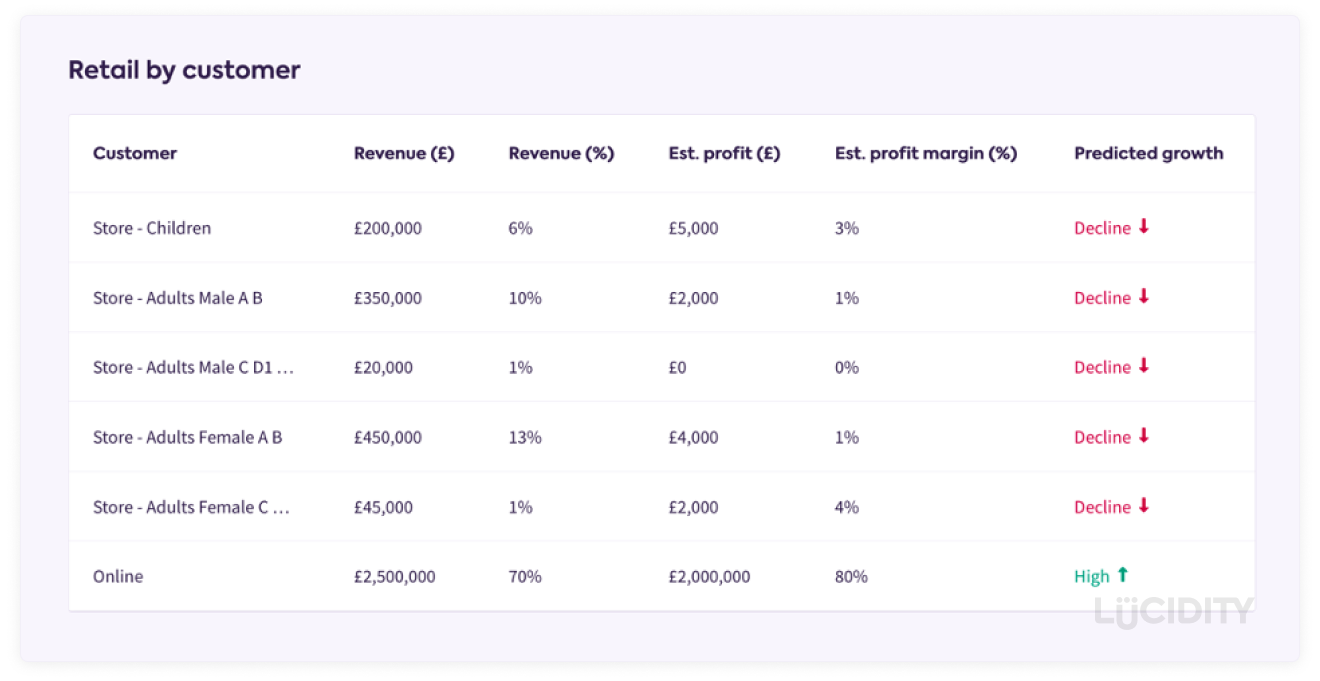In this guide we look at how to segment your revenues so that you make sure you continue to focus on activities that support your growth. This process will also help you identify activities you should stop as they are not profitable or not bringing growth.
What is Revenue Segmentation?
We all look at our businesses in different ways and we all segment our revenues in different ways. This could be by customer type (large, medium, small), by locations (North, South, East,) or by services (Buyers of Service A, Buyers of Service B), to name just a few. There are many ways you could segment revenue, including:
The strategic process we outline in this guide is about understanding how best to segment your revenues and then to assess each different revenue stream and make decisions that will influence your strategy.
What’s the best medium for Revenue Segmentation?
It’s a good idea to undergo this process as a team, with key players from different areas of the business. This will ensure you are getting a thorough understanding from all areas and are making well-informed decisions.
Within your Lucidity account you will find a Tool for Revenue Segmentation. Here you have an interactive tool that will allow you to input each of your revenue streams and add all the important information against each one. You’ll also be able to easily work through the Start/Stop/Continue exercise outlined later in this guide.
What preparation should be done before starting the Revenue Segmentation exercise?
As we’ve already said, it’s a great idea to undertake this exercise as a team. So, the first thing to do is schedule a session with everyone you want involved. It’s a good idea for someone to come to that session with details of your revenue streams to hand. Keep reading to find out exactly what information is going to be needed for this exercise.
Getting Started with Revenue Segmentation
The first important thing to do is decide exactly how you segment your revenue and customers and make that clear to the team involved in this exercise. So, take a look at the list in the introduction and be clear about which apply to you. The next stage in this process and tool is to then understand a bit more about those individual revenue streams:
- How big are the revenues?
- What % of your overall revenue are they?
- How profitable are they in terms of £’s and %’s?
- Are the revenue streams growing? Are they flat? Are they in decline?
These are all simple but important things that you should know about your revenue streams, however you segment them.
This helps you understand your revenues as in the following examples:
Example 1
A software business that segments its revenues by product type (Basic, Enterprise etc)
Example 2
A construction business that segments its revenues by geography
Example 3
A retail business that segments its revenues by customer type
You’ll find more examples from different industries and different ways of segmenting within the Revenue Segmentation Tool in Lucidity. So, add each of your revenue streams and the detail about each into the framework within Lucidity to produce your own version of these revenue breakdowns.
So now you understand your revenues – what do you do next?
Start / Stop / Continue Decisions
This next exercise will really kick-off your strategic thinking and forms an important building block to formulate your overall strategy.
Strategy is about choice. To reach your future goal you need to decide what to Stop, Start and Continue.
Working through your list of different revenue streams, with the insight you’ve noted in the previous step (revenue percentage, profit, margin and predicted growth), you’re going to now consider if each activity should continue or be stopped.
What Should Continue?
If you want to grow, then you need to choose the products, services, customers and geographies that you should CONTINUE to focus on. Things that you may wish to continue are products, services or customer types that you already have and are good for your business. Perhaps they provide you with large or consistent revenues and profits, perhaps they are activities that are stable or growing slightly. These are good things for your business to continue.
Activity that you continue would have the following traits:
- Good/high revenue
- Good/high profit
- Flat to growth
- Healthy customers
- Non-toxic Low/medium competition USP or good defence
What Should Stop?
Things that you may wish to STOP are products that are in decline or take a lot of time and resource for not much revenue or profit. Or customer types that are in decline, or don’t provide much revenue and profit, or are problematic. Sometimes you have to make a decision to STOP doing these things for the good of your business, so it can move forward. Now you’ve noted Continue or Stop against each of your listed revenue streams it’s time to consider adding new lines to this list.
Activities you should stop would have the following traits:
- Low revenue contribution
- Low growth
- Resource intensive for you
- Any toxicity for your business
- No USP, can’t defend
- Low profit
- In decline longer-term
- Difficult in some way
- Highly competitive
What Should Start?
Things that you may wish to START are new products, additional customer types, additional geographies and new market segments that will help your business grow and meet your future goals. These are new things to S
START and drive your growth.
Activities that you start would have the following traits:
- Substantial revenue possible
- Mid to long-term growth
- Non-toxic for your business
- USP
- Good/high profit
- Healthy customer segment
- Low/medium competition
- Competitive advantage
How often should we update our Revenue Segmentation analysis?
This exercise should be completed during your initial strategy formulation as it’s a crucial building block for devising the right plan for the future of your business. But it’s also good practice to be looking at your revenues in this context on a quarterly basis.

